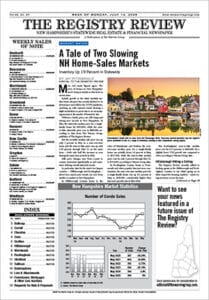The Paycheck Protection Program came to an end on Monday with small businesses affected by the pandemic receiving another $277.7 billion in forgivable loans this year.
The program had run out of funding in early May, though the U.S. Small Business Administration set aside money so community financial institutions working with underserved communities, including minority depository institutions and community development financial institutions, could continue lending until the May 31 deadline.
The rebooted PPP, which had been authorized by pandemic relief legislation late last year, was originally set to expire on March 31 before Congress extended the program for another two months.
Lenders processed more than 6.6 million loans this year through May 31, according to SBA data. The PPP had been created by the CARES Act and launched in April 2020. Combined with funding from last year’s program, small businesses and nonprofit organizations nationwide received 11.8 million loans for $799.8 billion. The loans are forgivable if businesses use the funds for eligible expenses established by the program.
New Hampshire small businesses and nonprofit organizations received over $1.16 billion in funding this year, taking 16,617 loans.
The 2021 version of the PPP allowed the hardest hit businesses that had received a PPP loan last year to apply for a second loan if they met certain conditions. These second-draw loans made up nearly 44 percent of the loans processed nationwide and 75 percent of the funding.
Businesses taking a first loan in 2021 had an average loan size of $18,000. Nearly 99 percent of these businesses had 10 employees or fewer.
Chase Bank provided the most funding nationwide, with about $12.1 billion loans and an average loan size of about $77,000. Bank of America was next with $8.9 billion in funding for an average loan of about $60,000.
Arizona-based Prestamos CDFI, a division of Chicanos Por La Causa Inc., processed more than 494,000 loans in 2021 for an average loan size of $15,526.
The PPP was criticized last year for not reaching many minority and other underserved business owners. Community financial institutions were given a priority window in January to start processing loans as the SBA attempted to address the barriers that minority, underserved, veteran, and women-owned businesses had faced in accessing capital.
“The Paycheck Protection Program provided over 8.5 million small businesses and nonprofits the lifeline they needed to survive during a once-in-generation economic crisis. I’ve heard story after story from small business owners across the country about how PPP funds helped them keep the lights on, pay their employees – and gave them hope,” SBA Administrator Isabella Casillas Guzman said in a statement. “At the same time, millions of underserved businesses – particularly our smallest businesses and those owned by women and people of color – were left out of early rounds of relief. I’m proud of the work we did to begin to rectify these inequities – in 2021, 96% of PPP loans went to small businesses with fewer than 20 employees. Moving forward, we will continue to prioritize equity in all SBA’s programs and services.”


